一提起沙漠,人們常常會把它與荒蕪兩個字等同起來,這也是我們一直沒有去Joshua Tree National Park的主要原因之一。
十二月21號是個周末,一家三口十點鍾從家裏出發,一路向東直奔大沙漠。冬日裏的大漠蕭瑟空曠,天地也因此變得更加遼闊。當下午的太陽終於衝破雲層直射過來時,無處躲避無處藏身的我對著明晃晃刺眼的陽光竟然有幾分恍惚。那日的雲層太厚,沒有見到夕陽,否則浩渺無垠中的落日一定有種別樣的美,會不會有"大漠孤煙直"的意境呢?
沙漠中的這種約書亞樹,其實不是第一次見。但是這麽集中的一大片一大片,或密集或零星地分布在平地上還是頭一回見到。它們與不遠處一座座連綿不絕的石頭山、一堆堆碎石相依相守相望,在這塊比Rhode Island州 (近80萬英畝) 還要大的沙漠公園中,日侵月蝕,一起經風霜,耐幹旱,見證著世間百年甚至千年的變化 (約書亞樹能存活上網百年,有些樹種甚至上千年)。 約書亞樹是一種Yucca灌木樹,有生命之樹之稱,在西班牙語裏又有一種叫法有"沙漠匕首"(desert dagger)的意思。 據說約書亞樹這個帶著宗教色彩的名字是當年摩門教徒穿行沙漠時命名的。當我行走其中,看到一棵棵頂上展開著枝叉的樹,想象著當年摩門教徒跋涉在一望無際大荒漠裏看到這種帶著綠色生命之樹時的激動和興奮,在他們眼裏,這些伸展向上的樹猶如約書亞仰天伸著雙手引領著他們,像曾經引領摩西行走曠野進迦南美地一樣,給了他們希冀和信心。
除去約書亞樹,公園的另一大風景便是石頭,滿目的碎石和石頭山,它們的形狀有圓的、方的、平的、各種幾何圖形、大大小小,應有盡有。這些成堆的石頭據說是從地底下經過地質碰撞拱上來的。冬天的耶和華公園遊客並不少,有不少攀岩愛好者搭著繩索,在看似光滑的陡峭懸崖上緩慢移動著,他們的動與石頭的靜,他們的渺小與石山的高大磅礴形成了鮮明的對比,成為沙漠中的一道風景。
12/21/2019是冬至,一年中最短的一天,五點不到天就黑了。暮色中,我們離開了沙漠公園, 本來計劃在那裏看星星的,也因為那日雲層太厚,星辰寥寥而作罷。當一個小時後車輛駛出黑夜籠罩的大漠,隻見山下城市萬家燈火,車水馬龍。其實曠野與文明相距並不遙遠,荒寂和繁華它們是共存於天地間、星河下,世界因著它們的存在而多彩、各異。
一直在想,Joshua Tree能在1994年升級國家公園,體現的是美國對自然的重視和尊重,這些看似荒蕪、類似月球火星地貌的沙漠,連同地下可能埋藏的豐富礦床一起受到國家法律的保護,同時也是為不同物種的生殖繁衍提供了優越環境,使這個本來就地大物博的國家,資源愈加豐厚,源源不竭。
相比較,我們曾經崇尚"與天鬥,與地鬥", "人定勝天,"改天換地","把沙漠變良田",忽視大自然的自身法則。約書亞樹國家公園之行給我們上了一課,讓我們了解到那些生存於惡劣環境下的動物植物,它們是如何飲朝露,躲烈日,儲備珍貴的水分食物,懂得了謙卑臣服於大自然麵前的重要性。所謂適者生存,是學會適應、 變通,而非與大自然抗爭,因為事實證明人類是鬥不過天的。
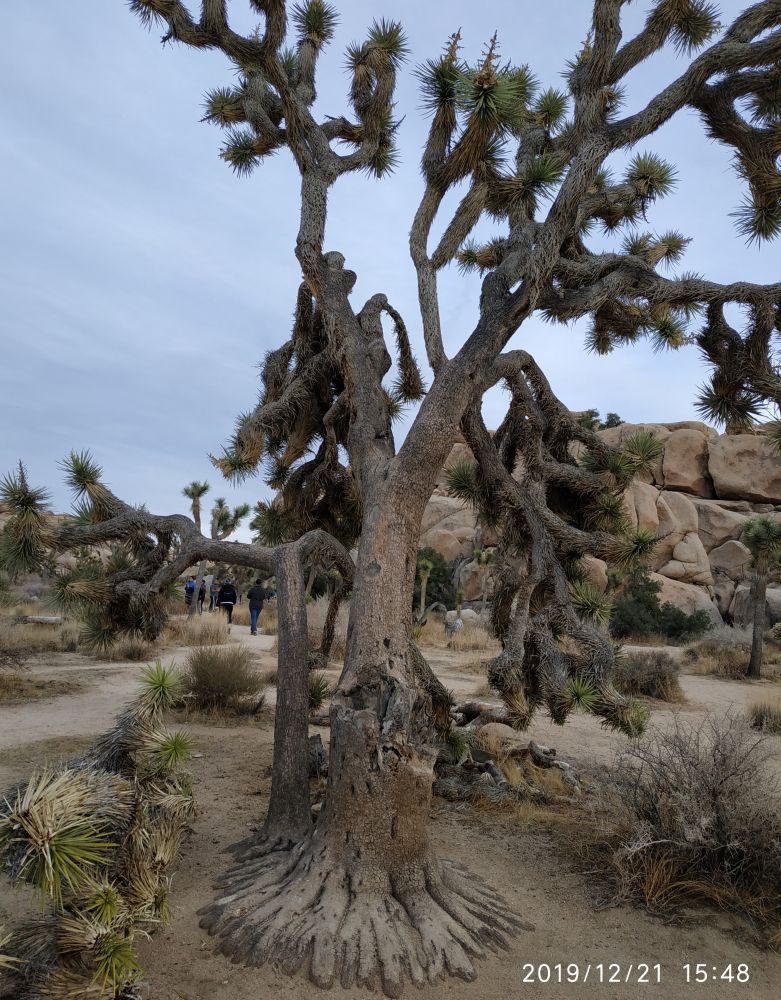






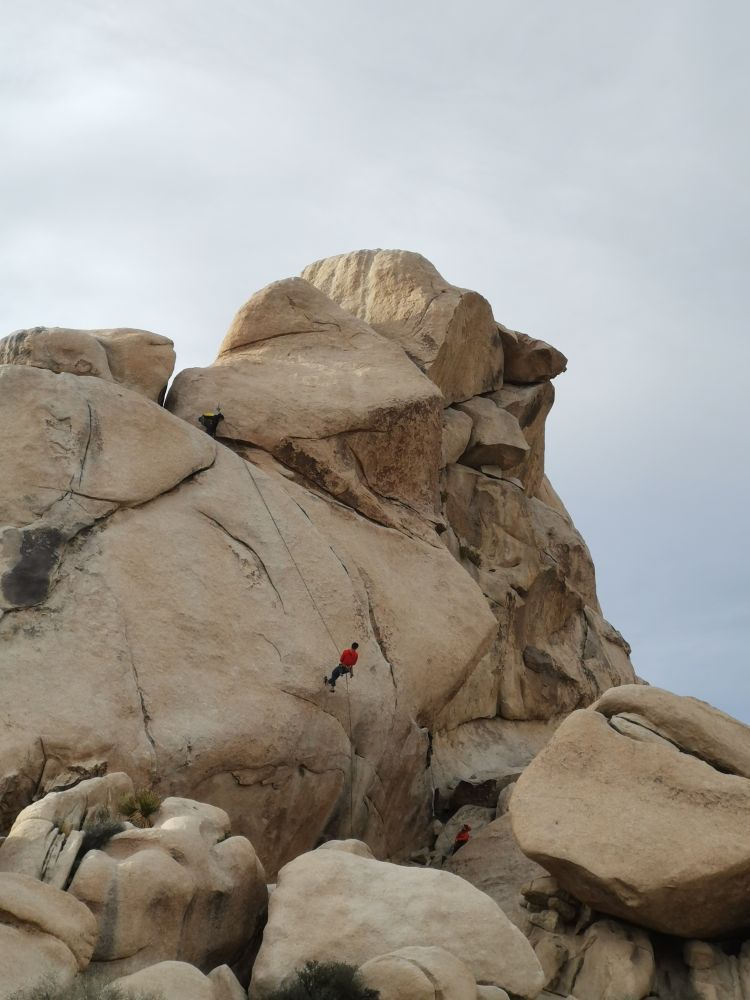
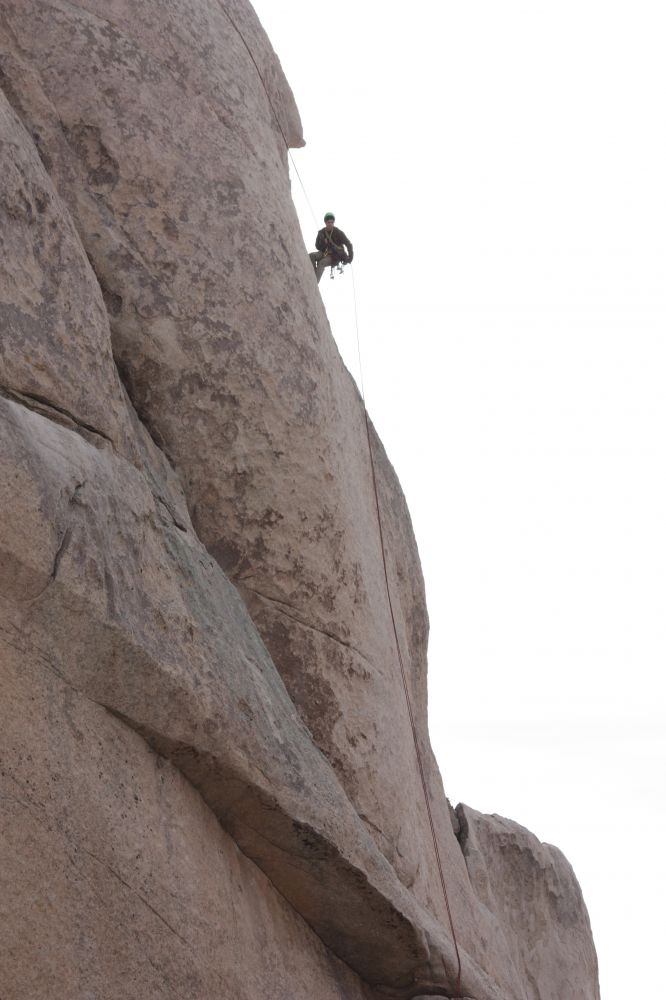


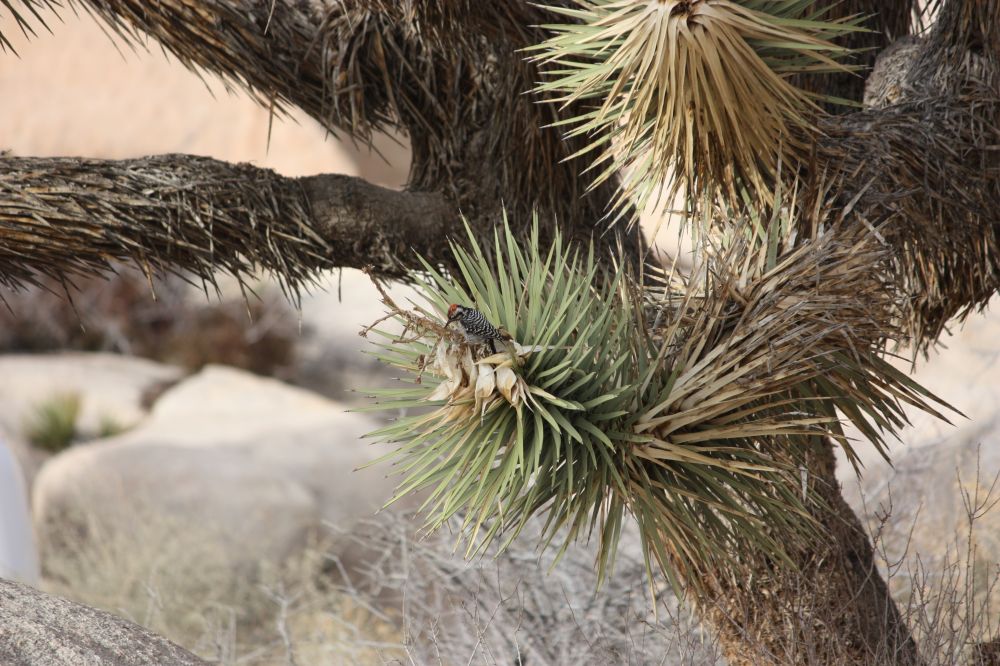



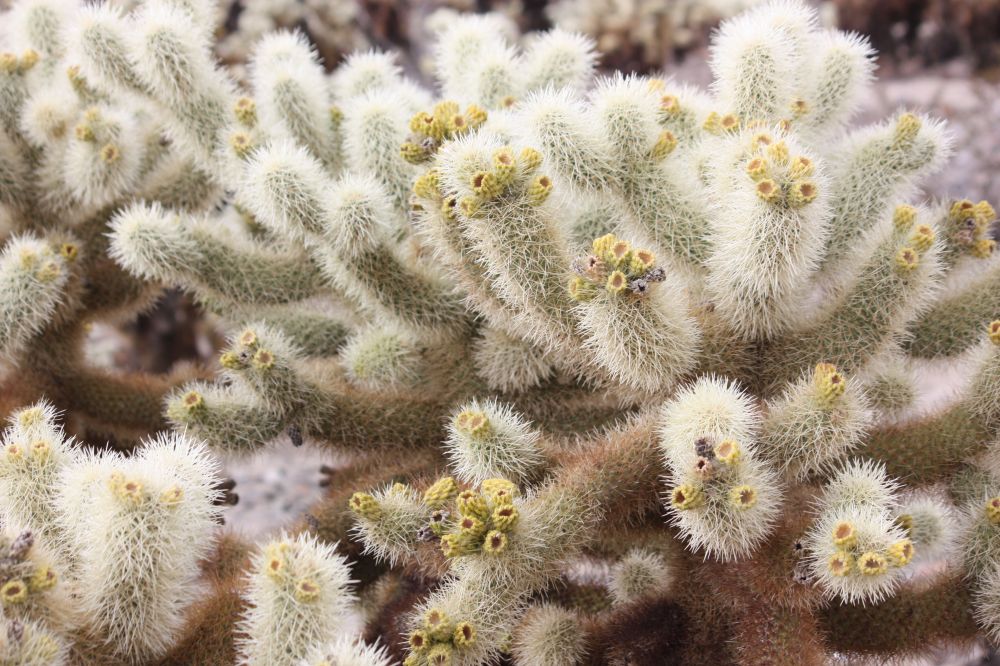



Joshua Tree National Park is only about three hours’ drive. But the fact it is a desert puts it off our must-see list, and for the last twenty years or so we have never been there.
On a usual Saturday of late December (12/21/2019), we set out to the park. By the time we arrived at the destination, it is high noon. The winter desert under the gloomy sky looks bleak and parched. What come to our views are hills after hills of bare rocks, and piles and piles of broken rocks scattering underneath. Between the hills is the flatland, forested with Joshua trees. Densely or sparsely they cluster, the dry gray trunks branching into multiple green spears at the top. The Joshua tree, a tree of life, has a name of “desert dagger” in Spanish. The biblical name Joshua is said to be given by early Mormon settlers crossing the desert in the 19th century. The unique shapes resembled Joshua extending his hand into the air, guiding the Mormons through the endless harsh wilderness.
In our hours’ drive into the depths of the desert, we stopped here and there for a desert view; for a closer look at the Joshua Tree and the geometric formations of smooth, bare rocks; for a hike across meandering arid desert road to Baker Dam; for a few photographs of the climbers braving against towering rocks; for an attempt to climb the rocky hills ourselves. For once or twice, we see a rabbit, a rat and a bird, running to the bushes or flying from branch to branch. More than once, we noticed some succulent plants and flowers, withered or still blooming, in the cold desert wind. We complete our trip by returning to Joshua tree the next day to Cholla Cactus Garden, a garden singularly full of Cholla cacti defying the harsh winter with its silvery thorny needles and budding flowers.
Compared with other national parks, Joshua Tree does not offer as much varied scenery. But the immensity of its land, barren but bountiful, a bit larger than Rhode Island, is a habitat of plants and animals whose survival is not just a miracle, but a valued lesson for us human beings. It is their humbleness and adaptions to the severe conditions that make these seemingly high desert outcasts winners in the world, living seclusively and luxuriously without fighting for space and resources in the crowds.
|